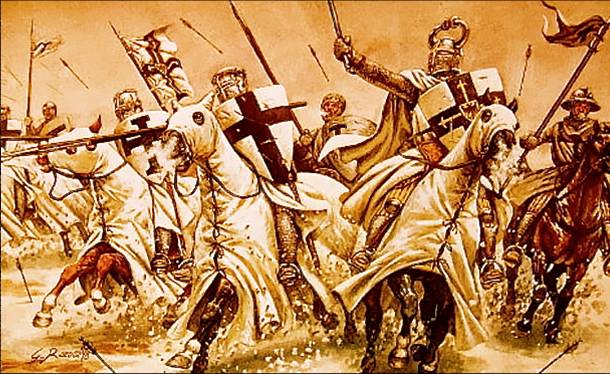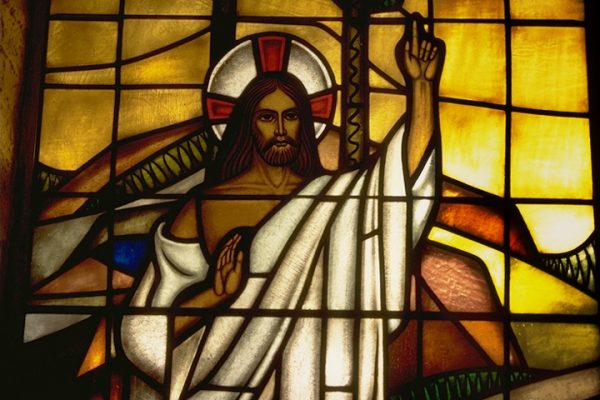The Great Crusades
The Failure of the Later Crusades
The Great Crusades The First Crusade had accomplished a miracle of sorts. A few thousand knights had taken the Holy Land by storm and established a series of Crusader states. These were The County of Edessa, The County of Tripoli, The Principality of Antioch, and The Kingdom of Jerusalem.
Yet, if the Crusaders believed their miraculous success during the First Crusade would set the tone of all future crusades, they were sadly mistaken. Every subsequent crusade would prove a dismal failure. Those counted as successes by western kings and popes achieved little more than a maintenance of the status quo.
One by one, the Crusader states would fall back into the hands of the infidel, and the hard won city of Jerusalem was in constant need of rescue. As Christian Crusaders grew ever more frustrated with their failure against their Muslim foe, they began to turn the crusading spirit against their fellow Christians. In the Fourth Crusade, they conquered the Orthodox Christian city of Constantinople. And by the turn of the 13th century, Popes were sending Christian kings on crusade against other Christian kings.
The Failures of Crusaders
So, how do we explain the failure of the later Crusades?
Well, to begin, we must remember that the success of the First Crusade was something of a fortuitous fluke. It was not won by the superior arms and tactics of the Crusaders, but rather by the disorganization of the Arabs. The once-united Arab nations had recently been shattered by invading Turks and internal strife.
The Crusaders were able to take advantage of this chaos in the First Crusade. In the later Crusades, the Holy Land was prepared for the Crusaders, and the many failings of the crusading movement led to a series of unmitigated disasters. The gross ignorance of the Crusaders combined with their lack of clear leadership and failure to commit all combined to doom the later Crusades.
The Crusaders had no real notion of the geography, climate, or political structure of the Near East. Crusaders often failed to even make it to the Holy Land. Northern Europeans, in their full armor, sweltered in the heat of Mediterranean summers. The shifting political power of the Middle East meant that a Crusader would sign a peace treaty with one leader, only to have that peace treaty violated by another. The Crusaders also had no clear leadership. Lords and kings squabbled among themselves, and popes struggled to keep the crusading armies pointed in the right direction.
The Crusaders never seem to have made a real commitment to retaking the Holy Land. The kings of Europe had more important matters to deal with, like expanding their territory and maintaining the dynasties at home. Had Europe turned its full power on the Middle East, they very well might have held on to the Holy Land. Instead, the efforts of Western kings in the Holy Land became ever more half-hearted. Going on crusade became something of a moral obligation. It was just something one was expected to do.
Many leaders simply went through the motions, bringing a small fraction of their armies on a sort of armed pilgrimage to the Holy Land. They’d engage in some minor skirmishes, slaughter a few handy Muslims, and then head back to Europe, to bask in unearned praise for their piety and bravery. So, let us take a look at the tales of incompetence and treachery that made up the later Crusades.
Crusades to the Holy Land
The Second Crusade
The Second Crusade seemed off to a good start. Unlike the First Crusade, which was led by a few lords, this crusade was led by two kings: Louis VII of France and Conrad III of Germany, who led their armies east to rescue Jerusalem. Though neither of these kings were particularly great leaders, and though neither had very large armies at their disposal, they must have set out with a fair expectation of success. Louis even brought his wife, Eleanor of Aquitaine, with him. Louis and Conrad never even made it to Jerusalem. Their armies were cut to pieces in Asia Minor. With what remained, they attempted a failed siege of Damascus, before finally heading home with their tails between their legs. By the end of this crusade, the county of Edessa had fallen from Christian hands, never to be reclaimed.
The Third Crusade
Thinking that perhaps three kings would succeed where two kings had failed, three monarchs led the Third Crusade: Barbarossa of Germany, Philip Augustus of France, and Richard the Lionhearted of England. This was an uneasy alliance of old rivals. Nevertheless, these three kings might have enjoyed some degree of success, if the Middle East had not been united under the rule of the powerful Sultan of Egypt: Saladin the Great. Though Barbarossa could not even stay on his horse and died early in the crusade, and Philip Augustus seemed simply to be going through the motions, Richard the Lionhearted was fully committed to the crusading spirit.
However, this crusading spirit was not enough to accomplish much. After a few skirmishes and some inconclusive battles, the Third Crusade ended with no real progress made. Richard’s strange combination of blood thirst and piety made him unpopular among his fellow rulers. The three kings squabbled almost the entire trip, and Richard managed to antagonize his allies to such a degree that he found his return trip to Europe blocked by hostile Germans, who captured Richard and held him for ransom.
The Fourth Crusade (1202-1204)
The Fourth Crusade marked Europe’s first real victory since the First Crusade. However, it was a victory over Christians, rather than Muslims. Though Pope Innocent III had called this crusade to rescue Jerusalem, the Venetian traders who provided the funding and ships for this crusade had a different idea. Hoping to undermine one of their greatest trading rivals, the Venetians persuaded the Crusaders to attack Constantinople, the capitol of the Byzantine Empire.
In 1204, Constantinople, which had stood up to countless Eastern invaders and served as Europe’s shield in the East, was betrayed and sacked by misguided Crusaders. The Crusaders would hold Constantinople for about 60 years before the Greeks finally took their kingdom back. Nevertheless, the deathblow had been dealt to the Byzantine Empire, though it would take the massive Byzantine bureaucracy another two centuries to realize it.
The Children’s Crusade (1212)
As if the Byzantine betrayal were not bad enough, the next crusade, or Children’s Crusade, was a truly shameful affair. Thousands of young people from across Europe tried to make their way to the Holy Land, thinking that their youthful innocence would succeed where their elders had failed. Many died trying to cross the Alps, but most never made it further than Marseilles, where they were sold as slaves.
The Fifth Crusade (1217-1221)
Realizing that this abuse of crusading was beginning to make Christianity look really bad, Innocent III called the fourth Lateran council, and redirected the Crusaders toward Egypt, which he considered to be the heart of Muslim resistance. Though the Crusaders were able to take a town or two, they were forced to surrender their gains after a devastating defeat at the hands of Sultan Al-Kamil, who had succeeded Saladin as Sultan of Egypt.
The Sixth Crusade (1228-1229)
The last crusade to end with something vaguely resembling of victory was the Sixth Crusade. Yet, it was a victory of diplomacy rather than a victory of warfare. Unlike previous crusading kings, Frederick II of Germany actually bothered to learn Arabic. This allowed him to negotiate the return of Jerusalem with the Egyptian Sultan Al-Kamil. Unfortunately, this peace was short lived, and by 1244, Jerusalem was once again in the hands of Muslims.
The Seventh, Eighth and Ninth Crusades barely deserve mention. They were unmitigated failures. For the Seventh and Eighth Crusade, Louis IX of France led his armies in a suicidal attack on Africa. His soldiers sweltered in the African heat, and were neatly defeated at every turn. For the Ninth Crusade, Prince Edward of England, who was supposed to join Louis on the Eighth Crusade to Africa, instead led his armies on a failed invasion of Syria.
Crusades in Europe
Meanwhile, back in Europe, various popes had called for more crusades, not against the infidel in the East, but against their Christian enemies at home. At first, these crusades were called against heretics. In 1208, Pope Innocent III led a crusade against the Heretical Cathars of France. In 1232, Pope Gregory IX declared a crusade against Dutch peasants who refused to pay their tithes to the church. And no fewer than five crusades were declared against the heretical followers of Jan Hus. As the Crusader movement grew, soon popes were declaring crusades against Christian kings.
A crusade was called against King Peter III of Aragon. Two crusades were called against Henry III of England, and no less than three popes would call for crusades against Frederick II of Germany and his successors. Though these domestic crusades were couched in religious terms, in truth they were just a case of the Pope declaring a crusade against his political enemies.
Why did the papacy, which had struggled for centuries to keep Christians from killing one another, reverse its position? We’re not sure. Perhaps the morality of the papacy had slipped. Perhaps the popes hoped to play a larger political role in Europe. Whatever the reason, the misuse of crusades at home, combined with their failure abroad, led to a steady decline in the power and authority of the papacy. This decline would come to a head in the protestant reformation of the 16th century.
The Great Crusades Lesson Summary
To review, despite the dazzling success of the First Crusade, the later crusades were marked by incompetence and treachery. The Crusaders were grossly ignorant of the geography, climate and politics of the Middle East. Though at their height, the Crusades drew several great kings to their cause, a lack of clear leadership and an unwillingness to commit fully doomed each of the Crusades to failure.
Of the eight Crusades that followed the first, only the fourth and sixth met with anything even resembling success, though the fourth was success over Greek Orthodox Christians, and the sixth was a success of diplomacy rather than warfare. Back at home, popes declared crusades against heretics, and their political enemies. This abuse of crusading at home, combined with the utter failure of crusading abroad, undermined the authority of the pope, and would play a key role in the advent of the protestant reformation.



